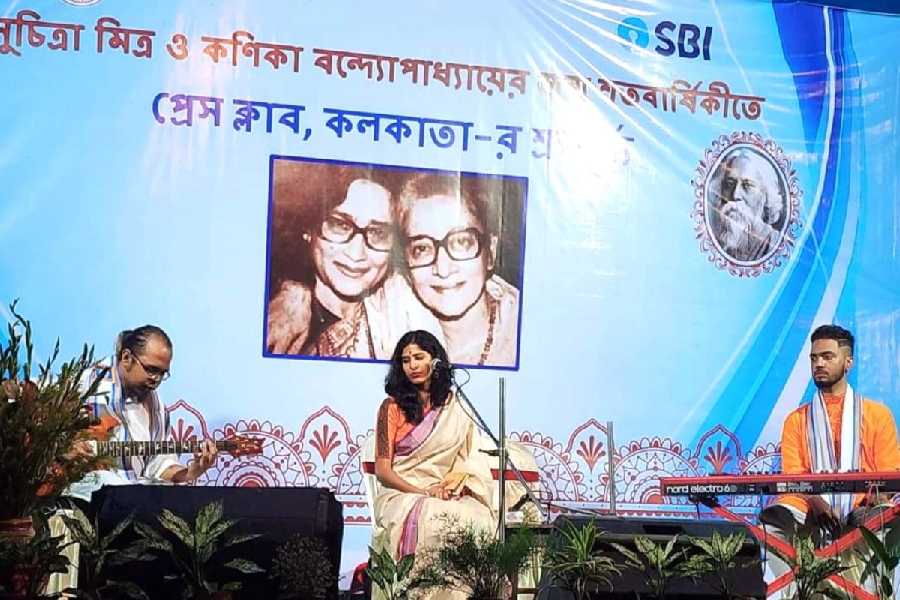Given her aspiration to figure among the legends and being blessed with a near-perfect pitch, Ritoja Chowdhury blended retro style with jazz in her collaborative presentation at a recent evening of Tagore songs organised at the Press Club. Most of the half-a-dozen songs that she rendered had a hymnal quality, especially in the higher notes. The recital was a tribute to the centenary celebrations of the Rabindrasangeet legends, Suchitra Mitra and Kanika Banerjee.
Choudhury and the two musicians, Tazim Sheikh (keyboard) and Swarnabha Gupta (guitar), made the songs sound beautiful and brooding under the open sky. She brought in a surge in the momentum of “Amar je shob dite hobe”, infusing the song with grace and force. Without the aid of any percussion instrument, she showed her prowess in connecting disjointed rhythms with infectious refrain. She spoke about her lineage to Kanika Banerjee (as one of her granddaughters) and interspersed her songs with prattle about her childhood memories. Through most of that, she was able to extract the beauty of “Aaj jemon kore gaiche aakash” and “Tumi kon pothe je ele”.
However, Choudhury also fell into the trap of going full-throated in the higher octaves — something which most singers are prone to do. Her voice conveys everything, from ecstasy to longing, and the tone can change and bring magic if she does not fall into the cattle trap. Both Gupta and Sheikh tailored their music to her style and brought an air of joie de vivre in their individual rounds.
One wished that she raised her scale in “Phule phule dhole dhole” — a song that she picked up sitting on her grandmother’s lap — because it restricted the frothiness of the song. In “Mori lo mori amay”, she added texture through the application of her voice and, while one was delighted with the Mayar Khela song, “De lo sakhi de”, one couldn’t help but notice that the voice came in crunches, again in the lower notes.
Earlier, Priyam Mukherjee and Ritopa Bhattacharya opened the session with songs like “Aaji e anandasandhya” and “Anandadhara boiche” that didn’t stray much from the conventional path. The surprise inclusions were “Chirosakha he” and “E porobashe”, which were not suitable for the audience that evening. But the singers complemented each other in systematic arrangements that drove music lovers into a reverie.











